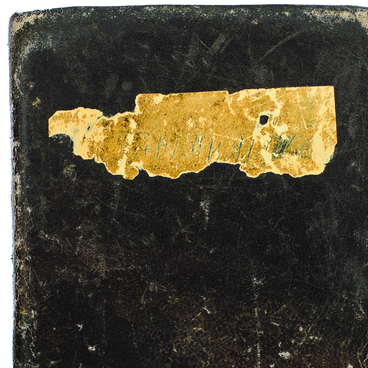In the 18th century in Russia, a variety of rushlight holders began to displace candlesticks. A rushlight is a type of candles made of thin dry wooden chips. By late 19th century, the rushlight practically lost its usefulness in everyday life. Instead, brass and bronze candlesticks for one candle became popular. Compared with candelabra stands for two, three or more candles, they were produced faster and in large volumes, respectively, they were much cheaper, and people were more willing to buy them.
The bronze candlestick from the collection of the Museum Complex of Kuybyshev was cast approximately in the late 19th — early 20th century. At that time, not only numerous factories, but also artisans were engaged in production of such candle holders. The products were often not branded. Therefore, it is extremely difficult to determine the place and time of manufacture of these candlesticks.
The origin of the museum exhibit is also unknown. However, there is some indication that it was part of church utensils of the Savior Cathedral of Kainsk — the old name of Kuybyshev.
The construction of the stone cathedral on the right bank of the Kainka River started in the late 18th century and ended in 1828. There were three altars in the church, the main one was consecrated in honor of the image of the Savior Not Made by Hands. The role of the Savior Cathedral in the spiritual life of the town was very high. The church was destroyed in 1939 under Soviet rule.
Many years later, the candlestick was accidentally found by a resident of Kuybyshev and donated to the museum.
The candlestick consists of three elements: a base, a stand and a holder for the candle. The parts are soldered to each other. The base of the candlestick is dark brown, in places it has a green tint; it is a stamped bronze disk in the form of a shallow plate with a cone-shaped elevated part in the center. The side with a height of a little more than a centimeter is parallel to the plane of the base.
The candlestick stand is generally cylindrical in shape, formed by alternating narrowing and expanding sections. It features five protruding “ribs”, of which the fourth one smoothly expands, the rest are visually sharper. The color changes from bottom to top from dark brown to dark yellow.
The bronze candlestick from the collection of the Museum Complex of Kuybyshev was cast approximately in the late 19th — early 20th century. At that time, not only numerous factories, but also artisans were engaged in production of such candle holders. The products were often not branded. Therefore, it is extremely difficult to determine the place and time of manufacture of these candlesticks.
The origin of the museum exhibit is also unknown. However, there is some indication that it was part of church utensils of the Savior Cathedral of Kainsk — the old name of Kuybyshev.
The construction of the stone cathedral on the right bank of the Kainka River started in the late 18th century and ended in 1828. There were three altars in the church, the main one was consecrated in honor of the image of the Savior Not Made by Hands. The role of the Savior Cathedral in the spiritual life of the town was very high. The church was destroyed in 1939 under Soviet rule.
Many years later, the candlestick was accidentally found by a resident of Kuybyshev and donated to the museum.
The candlestick consists of three elements: a base, a stand and a holder for the candle. The parts are soldered to each other. The base of the candlestick is dark brown, in places it has a green tint; it is a stamped bronze disk in the form of a shallow plate with a cone-shaped elevated part in the center. The side with a height of a little more than a centimeter is parallel to the plane of the base.
The candlestick stand is generally cylindrical in shape, formed by alternating narrowing and expanding sections. It features five protruding “ribs”, of which the fourth one smoothly expands, the rest are visually sharper. The color changes from bottom to top from dark brown to dark yellow.


